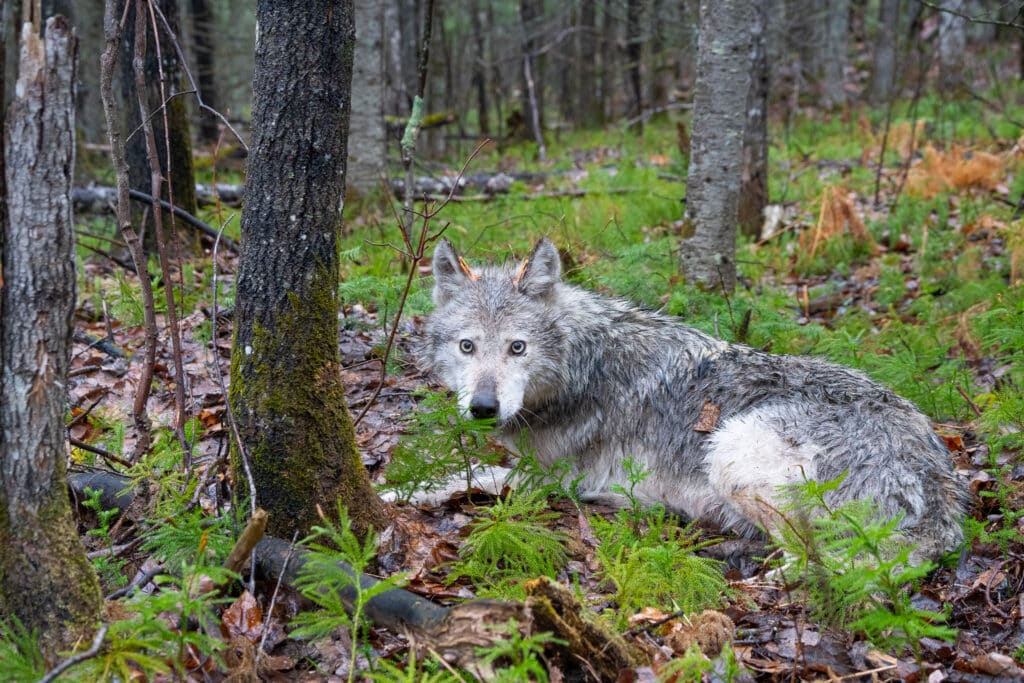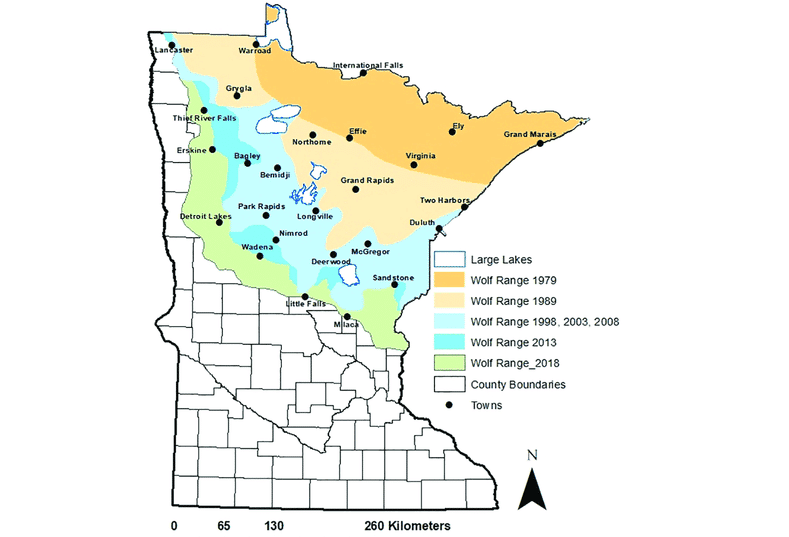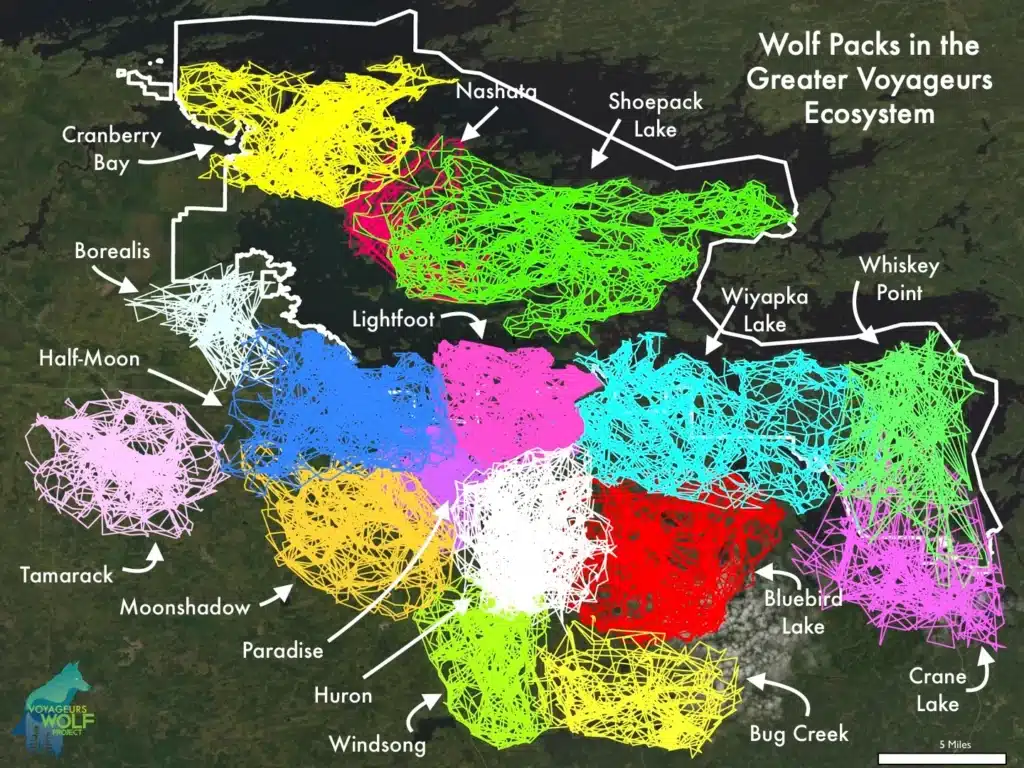
Lawmakers passed a bill titled “Trust the Science Act” which would delist gray wolves from the endangered species list.
The current population in Minnesota stands relatively stable at around 2,900 wolves. Prime habitat lies within the Quetico Superior region, where they prefer forests and inland wetlands. If the bill passes into law, it means that management would shift from federal to state governance. While the Biden administration has expressed opposition, opinions are different at local levels.
“Delisting a species is not just a numbers game,” Jill Fritz, Senior Director of Wildlife Protection with the U.S. Humane Society told WDIO. “In December, we checked in with the Minnesota DNR, the Minnesota Deer Hunters Association, and the Voyageurs Wolf Project to see if the Timber wolf is to blame for the deer decline in Northern Minnesota.”
Dan Stark, Large Carnivore Specialist with the MNDNR told WDIO that the department endorses the delisting and believes that wolves have sufficiently recovered, and should be sustainably managed under state laws.
Some legislators view the stable population as a success and motivation for delisting. “Activists endanger the Endangered Species Act by not removing species, like the gray wolf, when they have recovered,” said Congressman Tom Tiffany. “It’s a scientific fact that the gray wolf population has met and exceeded recovery goals, and it’s time to celebrate this success by returning wolf management back to where it belongs, in states’ hands.”
Wolves listed as threatened
The U.S. Fish and Wildlife Service (USFWS) states that gray wolves were originally listed as subspecies or regional populations in the lower 48 of the United States and Mexico. Also known as the Timber wolf, populations were nearly decimated by the 1930s. Consequently, only a handful of wolves survived in places like northeastern Minnesota.
Thus, wolves from the Superior National Forest formed the basis for the repopulation of species across the upper Midwest.
Like other animals, they faced near extinction. As a result, Congress passed the first federal Endangered Species Preservation Act in 1966. The Supreme Court described it as “the most comprehensive legislation for the preservation of endangered species enacted by any nation.” Protection for wolves in the state has been intermittent. In Feb 2022, Minnesota’s gray wolf became a federally protected species again. Under existing laws, they can only be dispatched to protect human life.
The 2023 MNDNR survey estimated a population of roughly 2,900 wolves in Minnesota. However, pre-settlement estimates of the population ranged from 4,000 to 8,000 animals. Despite research data indicating stable populations, they are listed as ‘threatened’. The species’ home range now encompasses over 27,000 square miles, with most of the population in the upper third of the state.
Biden administration opposes delisting
While the U.S. Fish and Wildlife Service (USFWS) has delisted several populations of gray wolves throughout the U.S. and determined that they do not need to be listed in certain areas, the White House statement expresses concern that “H.R. 764 would override and short-circuit the U.S. Fish and Wildlife Service’s science-based administrative rulemaking processes and wildlife recovery planning.” The bill still has to pass through the Senate first and eventually be signed by the President.

Recovery plans
There have been ongoing discussions for years about the management of wolves. Historically, recovery efforts have been developed around specific legal questions or data-driven science.
The USFWS is developing a first-ever nationwide gray wolf recovery plan to tackle the issues. The plan includes “a vision for species recovery that is connected to site-specific actions for reducing threats and conserving listed species and their ecosystems.” Furthermore, they also hope to cultivate new dialogue on how communities can coexist with gray wolves.
Similarly, the MNDNR updated its wolf management plan in 2022. Through partnership with tribal, federal, state, and local governments as well as other non-government organizations, the plan emphasizes collaboration. It includes six key initiatives.
- Maintain a well-connected and resilient wolf population.
- Collaborate with diverse partners to collectively support wolf plan implementation.
- Minimize and address human-wolf conflicts.
- Inform and engage the public about wolves in Minnesota.
- Conduct research to inform wolf management.
- Administer the wolf program to fulfill agency responsibilities and the needs of the public and partners.
Wolf monitoring project
Organizations in the state are conducting additional studies. Researchers from the University of MN, collaborating with Voyageurs National Park, initiated the Voyageurs Wolf Project. Their project includes tracking animals using GPS collars to collect data. These methods allow them to monitor feeding behaviors, reproductive outcomes, and den locations. Between the summers of 2013-2022, they surveyed sixteen wolf packs. Positive support has enabled the project to continue.

More info:
- Grey Wolves could be removed from the Endangered Species list – WDIO
- Statement of Administration Policy; H.R. 764 – Trust the Science Act – White House
- Minnesota’s Wolf Plan – MNDNR
- Minnesota Wolf Population Update 2023 – MNDNR
- Long-term research on wolves in the Superior National Forest – International Wolf Center

Wilderness guide and outdoorswoman Pam Wright has been exploring wild places since her youth. Remaining curious, she has navigated remote lakes in Canada by canoe, backpacked some of the highest mountains in the Sierra Nevada, and completed a thru-hike of the Superior Hiking Trail. Her professional roles include working as a wilderness guide in northern Minnesota and providing online education for outdoor enthusiasts.

